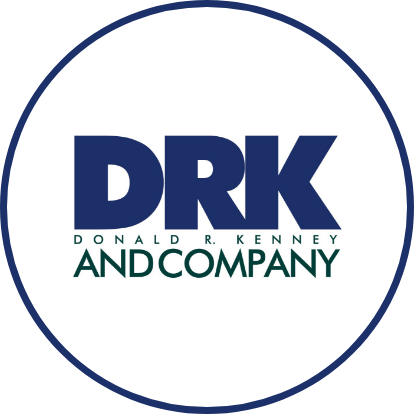What’s the difference between a smooth transition and utter chaos when moving to a new property?
A detailed business moving plan.
To ensure a well-executed office relocation, follow this checklist.

1. Initial Business Relocation Steps
Inform your landlord. Once you have a moving date set, inform your current property manager or landlord in writing about your move. Detail the last date of occupancy and review your lease for vacating requirements and agreements.
Designate a point person, or “Moving Manager.” This person will be responsible for coordinating and overseeing all details of the business relocation, including creating a timeline with deadlines.
Establish your budget. You’ll want to account for each service you’ll need, like movers, a space designer, cleaning services, a general contractor for electrical and paintwork, etc. If you’re moving long-distance, you’ll need to budget for employee relocation and severance packages.
2. 3-4 Months Before the Move
Announce your plans to move. Schedule a meeting with your team to explain the reason for relocating. At this point, you’ll also want to tell customers, partners and suppliers. Send out a letter or email explaining the move. Make sure to include the date your current office will close and the new office will open. It’s also a good idea to post regular updates on your website and social media.
Assess current and future inventory and furnishings. Start by planning your new office layout; you may want to work with a design specialist on the blueprints. Develop a plan and timeline to decommission your current office and liquidate assets. And identify the items that will need professionally disassembled and reassembled.
3. 2 Months Before Moving the Business
Protect your data. Hire a skilled IT team or assign an in-house IT facilitator. They’ll be responsible for backing up your data and critical files, assessing the IT infrastructure of your current office, securely managing password changes and troubleshooting throughout the move. They’ll also design and install the IT system in your new building, so remember to share your office blueprints with them.
Keep your insurance provider in the loop. Notify your business insurance company that you’re business relocation and ask about any additional coverage that may be required for the move. Then arrange the transfer of insurance coverage to your new building. If a transfer isn’t available, now is the time to shop for a new provider.
Go shopping! Purchase new furniture or equipment for your new building.
Secure storage. Determine if off-site storage is necessary for various items you currently have stored, like archived files, supplies and extra inventory.
4. One Month Before Moving Day
Stock up on supplies. If you’re working with professional movers, they’ll likely provide crates and boxes. Otherwise, pick up boxes, tape and markers for your employees to pack up their desks. If you have specific packing and labeling guidelines, be sure to share those with your team.
Transfer utilities. Schedule a stop date for utilities at your current office and set up utilities at your new location.
Update your address. Notify USPS, your bank, the IRS, financial institutions, magazine and newspaper subscriptions, online listings like Google and Facebook, and online delivery services like Amazon.
Keep everyone on schedule. Tell employees the day and time they’ll need to finish packing their desks, as well as the last workday in the old office and the first workday in the new office.
Notify contracted workers. Write a 30-day notice to end contracts at your old building, like cleaning, security and landscaping services.
Plan for other details. You’ll need to update your business licenses and notify tax authorities about your move. It’s also a good idea to use this time to arrange access passes, keys and parking cards. And remember to order business cards, signage and stationery.

5. One Week Before the Move
Check in with your team. At this point, your moving manager should review the moving status with your team and inspect the new office building, ensuring utilities are working and the space is clean.
Talk to the movers. Confirm the business moving date with them and the time they’ll arrive. You’ll also need to determine who will let them in your office, who will be present during the move and who will lock up at the end of the day.
Wrap up the old building. Remove signage and branding from your current office. And schedule a final inspection with the property manager or landlord.
6. The Day Before the Move
Check in with your team… again. Ensure all packing is complete. Collect security cards, keys, packing passes and other items that must stay at the old building. Make sure access cards are deactivated and disposed of properly. Confirm that the IT system is installed and functioning.
7. It’s Here… Business Moving Day!
While the moving company is doing the heavy lifting, you’ll need to:
- Ensure the IT coordinator is available for troubleshooting.
- Confirm installation of new signage.
- Stock the new office supply cabinets, bathrooms and break room.
- Walk through the old building and document any damage that may have happened during the move.
8. The Day After the Relocation
It may be tempting to kick back and relax the day after the move, but there are just a few more tasks to complete:
- Test phones, computers, Wi-Fi and IT systems.
- Confirm termination of your old lease and change-of-address updates.
- Have employees unpack their desks.
- Celebrate!
If you’re relocating to the Columbus area, our team can help. Contact us to learn more.
Have a great weekend,

Other blog posts you may enjoy:
8 Security Measures to Protect Your Commercial Real Estate Property
Site Selection 101: Where Does Your Commercial Property Belong?
Not Your Father’s Office: Design Inspiration for Commercial Real Estate Post-COVID
